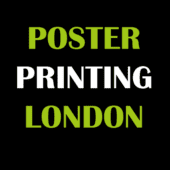A Step-by-Step Guide to Creating Posters in PowerPoint
Introduction
PowerPoint, a widely used presentation software, is not just for slideshows and business presentations. It can also serve as a powerful tool for designing eye-catching posters. Whether you’re a student working on a school project, a professional creating marketing materials, or an enthusiast wanting to showcase your creativity, PowerPoint provides a user-friendly platform for poster design. This article outlines a step-by-step guide to help you harness the potential of PowerPoint in creating visually appealing and effective posters.
- Choosing the Right Template:
Begin by opening PowerPoint and selecting a blank presentation or a template that suits your poster’s purpose. PowerPoint offers a variety of built-in templates, including those specifically designed for posters. These templates provide a framework that you can customize based on your preferences.
- Setting the Poster Size:
Before diving into the design process, ensure that your poster is set to the correct size. Go to the “Design” tab, click on “Slide Size,” and choose “Custom Slide Size.” Enter the dimensions that match the size you want for your poster. Standard poster sizes include A3, A2, or custom dimensions based on your project requirements.
- Adding Background and Color:
A visually appealing background sets the tone for your poster. Click on the “Design” tab, choose “Format Background,” and select a color or gradient that complements your theme. Consider using subtle colors to ensure readability and overall aesthetic appeal.
- Inserting Text Boxes:
Text is a crucial element in conveying information on your poster. Click on the “Insert” tab, select “Text Box,” and click anywhere on your poster to create a text box. Customize the font, size, and color using the options available in the “Home” tab. Use separate text boxes for different sections or headings to maintain clarity.
- Incorporating Images:
Images enhance the visual impact of your poster. Click on the “Insert” tab, choose “Pictures,” and select the image files you want to include. PowerPoint allows you to resize, crop, and arrange images easily. Consider using high-resolution images for a professional look.
- Utilizing Shapes and Graphics:
PowerPoint provides a variety of shapes and graphics that can be used to enhance your poster’s design. Access the “Insert” tab, choose “Shapes,” and select from a range of options. Shapes can be customized in terms of color, size, and transparency, allowing for creative expression.
- Arranging and Aligning Elements:
Maintain a clean and organized layout by using PowerPoint’s alignment and arrangement tools. Select multiple elements by holding down the Shift key and arrange them using the alignment options in the “Format” tab. Ensure proper spacing and alignment for a polished look.
- Adding Charts and Graphs:
If your poster involves data or statistics, PowerPoint allows you to create and insert charts and graphs seamlessly. Navigate to the “Insert” tab, choose “Chart,” and select the type of chart that suits your data. Enter your data, and PowerPoint will generate a visually appealing chart for your poster.
- Including Additional Details:
Enhance your poster’s informativeness by incorporating additional details such as icons, bullet points, or QR codes. Icons can be found in the “Insert” tab under “Icons,” while bullet points can be added using the “Home” tab. QR codes can be generated and inserted using online tools and then added to your poster for interactive elements.
- Reviewing and Proofreading:
Before finalizing your poster, take the time to review and proofread the content. Check for spelling and grammar errors, ensure consistency in fonts and colors, and verify that all elements contribute to the overall coherence of your design.
Conclusion
Creating a poster in PowerPoint provides an accessible and versatile platform for individuals with varying design expertise. By following these step-by-step guidelines, you can leverage the features of PowerPoint to craft visually impactful posters for presentations, events, or personal projects. Remember to explore different design elements, experiment with layouts, and let your creativity shine through as you bring your ideas to life in the digital canvas of PowerPoint.
